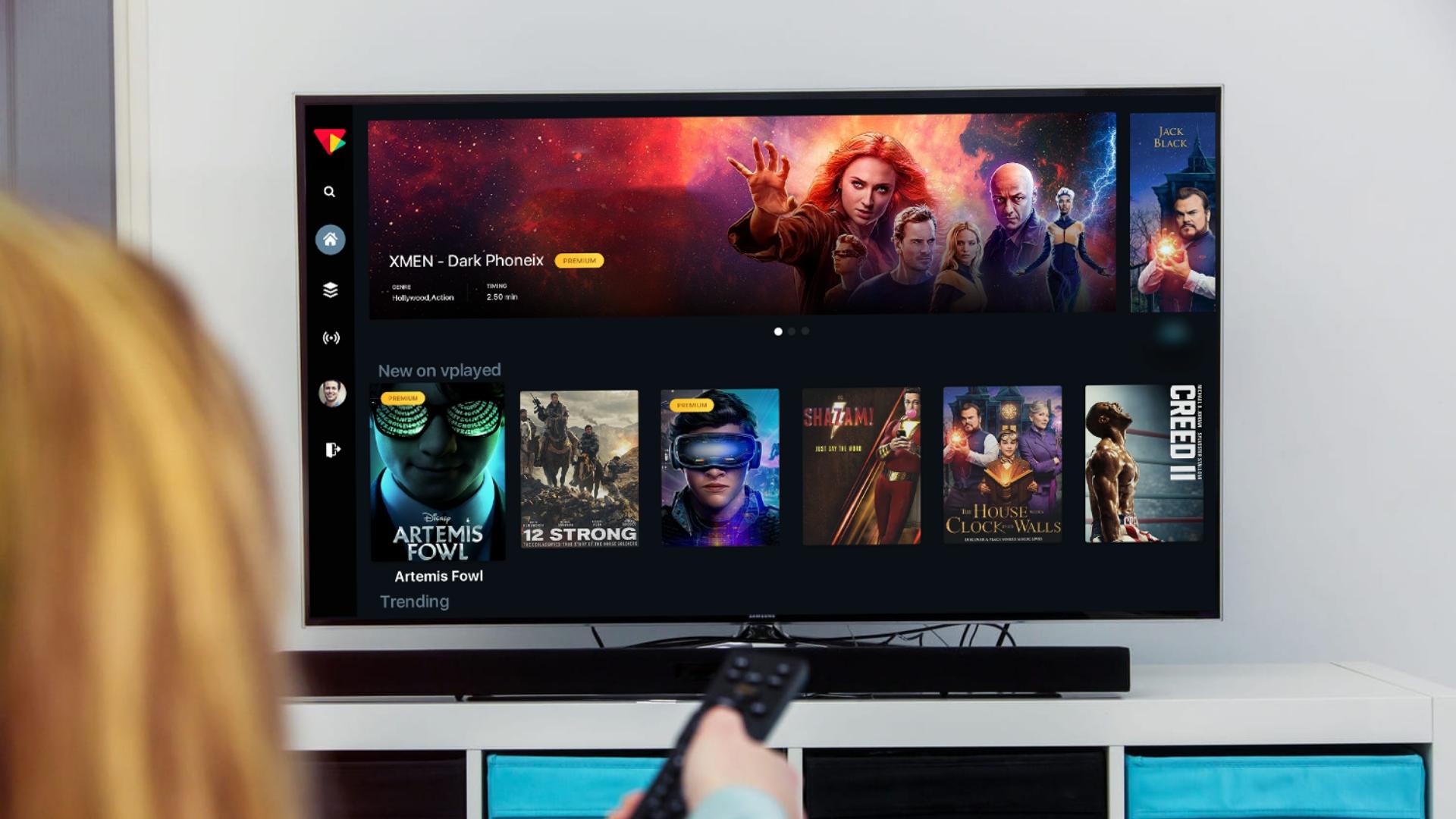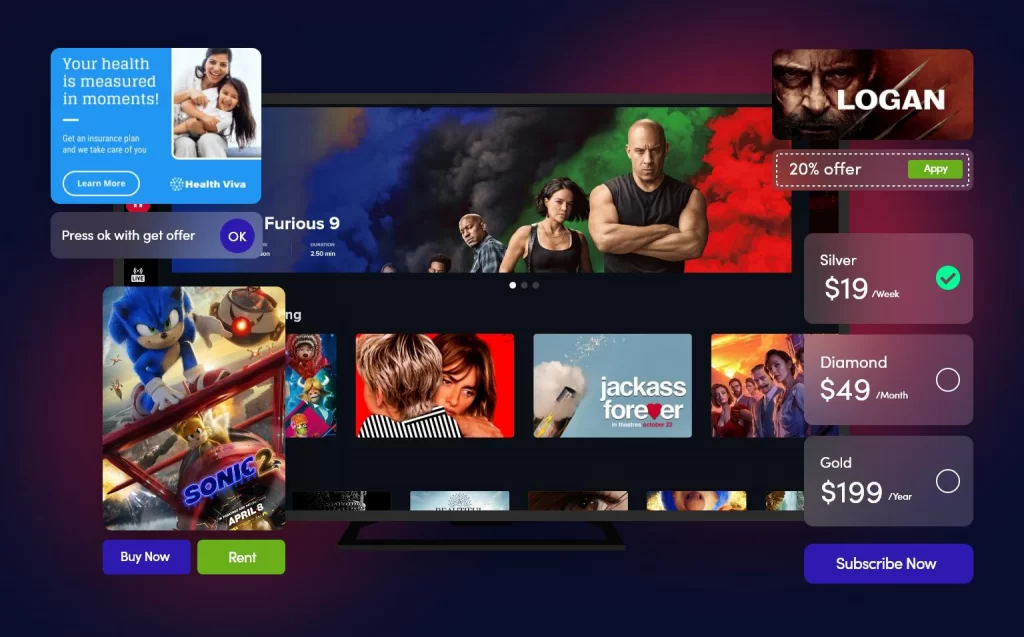The Single Strategy To Use For Apollo Group Tv
The Single Strategy To Use For Apollo Group Tv
Blog Article
The 30-Second Trick For Apollo Group Tv
Table of Contents3 Simple Techniques For Apollo Group TvThe smart Trick of Apollo Group Tv That Nobody is Talking AboutApollo Group Tv Fundamentals ExplainedExcitement About Apollo Group Tv
In this circumstance, instead than having three-minute industrial places during a 30-minute television program, TV shows might transform to one where a consumer will certainly be needed to have a monthly membership, to make sure that they cen view targeted banner ads. This kind of advertising and marketing currently occurs online, and the amount of data tv business gather permits them to do similar.Explain the major fads amongst the broadcasting and wire networks. Popular radio reveals such as authorities dramatization Dragnet and western cowboy series Gunsmoke were adapted for tv, and new TV shows were funded by single advertisers, just as radio shows had actually been.
Today, the television industry is far extra intricate. Programs are sponsored by several advertisers; programming is controlled by significant media conglomerates; and the three major networks no more dominate the airwaves but rather share their viewers with various wire networks. A number of factors make up these patterns within the market, consisting of technical growths, government laws, and the production of new networks.

The Best Guide To Apollo Group Tv
Even public television has actually come to be subject to the influence of advertising. Developed in 1969, (PBS) established out of a report by the Carnegie Compensation on Educational Tv, which examined the function of educational, noncommercial tv on culture. The report suggested that the government financing public television in order to give variety of programs throughout the network eraa solution created "not to sell items" however to "boost citizenship and civil service (McCauley, 2003)." Public television was additionally intended to give global access to tv for visitors in backwoods or visitors who might not afford to spend for personal television services.
The period in between 1950 and 1970 is historically recognized as the. Aside from a little portion of airtime managed by public tv, the three significant networks (referred to as the Big Three) controlled the television market, jointly making up greater than 95 percent of prime-time viewing. In 1986, Rupert Murdoch, the head of international firm News Corp, released the Fox network, testing the dominance of the Big 3.
Targeting young and minority audiences with shows such as Buffy the Vampire Slayer, Moesha, Dawson's Creek, and The Wayans Bros., the new networks wished to draw stations away from their old network affiliations. However, as opposed to duplicating the success of Fox, UPN and WB had a hard time to make an influence. Unable to attract many associate stations, both recently established networks got to less households than their bigger opponents due to the fact that they were inaccessible in some smaller sized cities.
This decision paved the means for the development of cable television flick networks, adding to the exponential development of cable in the 1980s and 1990s. apollo tv group. Additional deregulation of cable in the 1984 Cord Communications Plan Act removed restrictions on cord prices, allowing drivers to bill what they desired for cable television services as long as there worked competitors to the service (a requirement that over 90 percent of all cord markets might satisfy)
Apollo Group Tv Fundamentals Explained

Having actually produced the very first "superstation," Turner increased his world by starting 24-hour information network CNN in 1980. At the end of the year, 28 nationwide shows services were available, and the wire revolution had actually started. Over the following decade, the industry underwent a period of quick growth and appeal, and by 1994 viewers might select from 94 standard and 20 costs cable solutions.
Number 9 - https://disqus.com/by/apollogtv01/about/.16 Boosted competition from cord channels has created a consistent decrease in the networks' audience rankings. Throughout the 1950s, the cost of generating a single tv program increased as programs became longer and manufacturing expenses skyrocketed. Sponsorship on network tv shifted from solitary sponsorship, in which More Bonuses a program was totally sustained and generated by one advertiser, to several sponsorship, in which marketers purchased 1- or 2-minute areas on the show
Each action needs to be a minimum of one paragraph. Pick among the Big 4 networks and publish out its weekly programs routine. Enjoy the network's prime-time programs over the program of a week, keeping in mind the target demographic for each and every show. Observe the advertising sponsors that sustain each program and contrast just how the product or services fit with the designated target market.
Indicators on Apollo Group Tv You Need To Know

Straight TV, typically referred to as traditional broadcast television, incorporates cable and satellite tv. It's called "linear" because material complies with a fixed shows schedule, unlike on-demand material which the individual customer decides to watch based upon their very own choices and timetable. When you ask, "What is straight Television?", consider it as the timeless method of enjoying television that has actually been around for decades.
Report this page